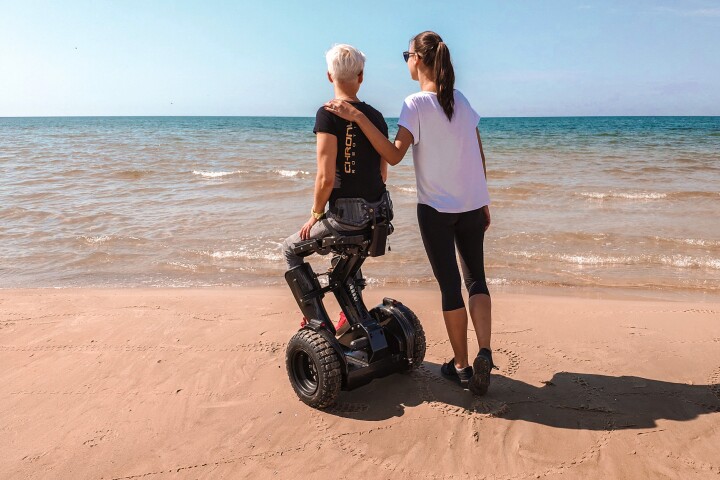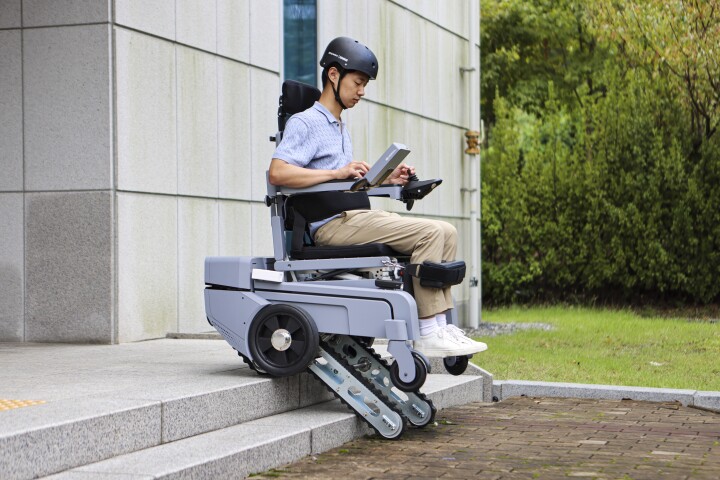Mobility Aid
-
For many wheelchair users, one of the biggest problems with using a chair is not being able to stand as tall as other people. The Kim-e wheelchair was designed with that fact in mind, as it raises its user to an upright stance in just a few seconds.
-
If the socket of a prosthetic leg doesn't conform to the contours of the user's leg stump, pain and even skin ulcers may result. A new prosthesis should help keep that from happening, by automatically pumping up its socket to maintain a good fit.
-
Most powered wheelchairs have at least two problems: they can't climb stairs, and the user has to remain in a single seated position. An experimental new robotic wheelchair, however, addresses both shortcomings.
-
When it comes to air travel, wheelchair users definitely face some challenges. That's where the Revolve Air wheelchair comes in, as it can be folded up – wheels and all – to qualify as carry-on baggage.
-
The ultimate in assistive mobility, Scewo’s Bro is the only self-balancing wheelchair able to rise up and climb stairs. This two-wheeled personal electric vehicle is delightfully intuitive to maneuver, as I found out first-hand at this year’s CES.
-
Garrett Brown invented the Steadicam, a tool that revolutionized the field of film production. His latest creation is a device known as the Zeen, which helps mobility-challenged users not only to get around, but also to stand up and sit down.
-
Although many seniors end up requiring some sort of mobility assistance, not all of them are wild about the stigma that comes with using a walker. That's where the Laufrad comes in, as it's a sleek adult-sized carbon fiber balance bike.
-
Chances are that if you think of someone who uses a walker, you picture them sedately making their way down a smooth sidewalk. Well, Rob's Walkers are for those other walker-users, who like getting into the woods and going off-road.
-
In the advanced stages of Parkinson's disease, some people develop a condition known as "gait freeze," in which they temporarily lose the ability to step forward. NexStride is designed to help, though, by giving them a laser target for their feet.
-
While some powered exoskeletons give able-bodied users "superstrength," others are designed simply to let physically-challenged people move about normally. A new version of the latter is said to be much lighter and more user-responsive than others on the market.
-
Wearable mobility robots can be big and heavy, but they have the potential to help those who can't move to walk again or make light work of heavy objects. Harvard's Wyss Institute has revealed a soft exosuit that's lightweight and portable, and can provide both walking and running assistance.
-
Taking inspiration from the traditional cane, a team of researchers has come up with a LiDAR-enabled robotic assistant which offers light-touch support for the mobility-impaired. Dubbed Canine, the device improves the user's spacial self-awareness, and thus, their walking stability.
Load More











